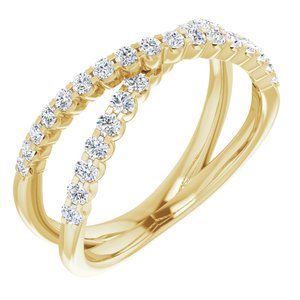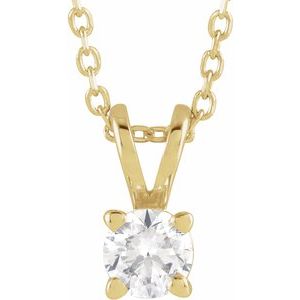Diamonds are one of the most fascinating and sought-after gemstones in the world. These precious stones come in a wide range of sizes, shapes, and colors, and are highly valued for their brilliance, durability, and rarity. One important factor that determines the value and quality of a diamond is its type.
Diamonds are classified into different types based on their crystal structure and the presence of impurities or defects in their atomic lattice. The four main types of diamonds are Type Ia, Type Ib, Type IIa, and Type IIb. In this blog post, we will explore each of these types in detail and discuss their unique characteristics and properties.
Type Ia Diamonds:
Type Ia diamonds are the most common type of diamonds found in nature, accounting for about 98% of all natural diamonds. These diamonds are characterized by the presence of nitrogen atoms in their crystal lattice, which give them a yellowish or brownish color. Type Ia diamonds are also known for their irregular shape and the presence of inclusions and blemishes on their surface.
Type Ib Diamonds:
Type Ib diamonds are a rare form of diamonds that account for less than 0.1% of all natural diamonds. These diamonds are similar to Type Ia diamonds in terms of their crystal structure, but differ in the type of impurities present in their atomic lattice. Type Ib diamonds have fewer nitrogen atoms and more boron atoms than Type Ia diamonds, which gives them a unique blue or gray color. These diamonds are highly valued for their rarity and beauty.
Type IIa Diamonds:
Type IIa diamonds are a highly sought-after type of diamonds that account for about 1-2% of all natural diamonds. These diamonds are characterized by the absence of nitrogen atoms in their crystal lattice, which gives them a pure, colorless appearance. Type IIa diamonds are also known for their exceptional clarity and high degree of transparency. These diamonds are often used in high-end jewelry and are highly valued for their rarity and beauty.
Type IIb Diamonds:
Type IIb diamonds are the rarest type of diamonds found in nature, accounting for less than 0.1% of all natural diamonds. These diamonds are similar to Type IIa diamonds in terms of their crystal structure, but differ in the type of impurities present in their atomic lattice. Type IIb diamonds have very low levels of nitrogen and a small amount of boron, which gives them a unique blue or gray color. These diamonds are highly valued for their rarity and beauty, and are often used in high-end jewelry and collectors' items.
In addition to these four main types of diamonds, there are also several subcategories and variations that exist within each type. For example, Type Ia diamonds can be further classified into Type IaA and Type IaB, depending on the size and distribution of nitrogen atoms in their atomic lattice. Similarly, Type IIa diamonds can be further classified into Type IIaA and Type IIaB, based on the presence of certain impurities or defects in their crystal lattice.

In conclusion, the type of a diamond is an important factor that determines its quality, value, and beauty. Whether you're in the market for a diamond engagement ring, a pair of diamond earrings, or a rare collector's item, understanding the different types of diamonds can help you make an informed decision and choose a diamond that is perfect for your needs and budget.
Diamonds are classified into different types based on their crystal structure and the presence of impurities or defects in their atomic lattice. The four main types of diamonds are Type Ia, Type Ib, Type IIa, and Type IIb. In this blog post, we will explore each of these types in detail and discuss their unique characteristics and properties.
Type Ia Diamonds:
Type Ia diamonds are the most common type of diamonds found in nature, accounting for about 98% of all natural diamonds. These diamonds are characterized by the presence of nitrogen atoms in their crystal lattice, which give them a yellowish or brownish color. Type Ia diamonds are also known for their irregular shape and the presence of inclusions and blemishes on their surface.
Type Ib Diamonds:
Type Ib diamonds are a rare form of diamonds that account for less than 0.1% of all natural diamonds. These diamonds are similar to Type Ia diamonds in terms of their crystal structure, but differ in the type of impurities present in their atomic lattice. Type Ib diamonds have fewer nitrogen atoms and more boron atoms than Type Ia diamonds, which gives them a unique blue or gray color. These diamonds are highly valued for their rarity and beauty.
Type IIa Diamonds:
Type IIa diamonds are a highly sought-after type of diamonds that account for about 1-2% of all natural diamonds. These diamonds are characterized by the absence of nitrogen atoms in their crystal lattice, which gives them a pure, colorless appearance. Type IIa diamonds are also known for their exceptional clarity and high degree of transparency. These diamonds are often used in high-end jewelry and are highly valued for their rarity and beauty.
Type IIb Diamonds:
Type IIb diamonds are the rarest type of diamonds found in nature, accounting for less than 0.1% of all natural diamonds. These diamonds are similar to Type IIa diamonds in terms of their crystal structure, but differ in the type of impurities present in their atomic lattice. Type IIb diamonds have very low levels of nitrogen and a small amount of boron, which gives them a unique blue or gray color. These diamonds are highly valued for their rarity and beauty, and are often used in high-end jewelry and collectors' items.
In addition to these four main types of diamonds, there are also several subcategories and variations that exist within each type. For example, Type Ia diamonds can be further classified into Type IaA and Type IaB, depending on the size and distribution of nitrogen atoms in their atomic lattice. Similarly, Type IIa diamonds can be further classified into Type IIaA and Type IIaB, based on the presence of certain impurities or defects in their crystal lattice.

In conclusion, the type of a diamond is an important factor that determines its quality, value, and beauty. Whether you're in the market for a diamond engagement ring, a pair of diamond earrings, or a rare collector's item, understanding the different types of diamonds can help you make an informed decision and choose a diamond that is perfect for your needs and budget.







